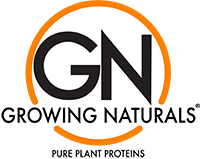
Eating the Right Protein on the Ketogenic Diet
When selecting a diet, the first question you should ask yourself is, “Is this healthy?” With diets that range from borderline healthy to downright bizarre, finding a healthy diet backed by science can be a challenge. Ketogenic diets, which were originally used to help control and prevent seizures in epilepsy patients, have grown in popularity in recent years as an effective fat-burning diet. These high-fat, low-carb diets are also heavy in protein, but the type of protein you eat can determine whether or not a keto diet is a healthy choice. 
Ketogenic Diet Basics
A ketogenic diet (also called a keto diet, low-carb diet, or low-carb high-fat diet) is a diet that consists of low-carb, low to moderate-protein, high-fat foods. This diet reduces almost all carbohydrates and replaces them with fat. When you eat foods high in carbohydrates, your body produces glucose, which is typically the first place the body goes for energy. When glucose is being used as the primary source of energy, the fat you consume is mostly stored. With the keto diet, the absence of carbohydrates forces the body into a metabolic state called ketosis, which causes the body to burn fat for energy instead of glucose from carbohydrates. Keep in mind that ketosis is different from ketoacidosis, a serious condition that occurs when the body creates an abnormal amount of ketones. The body does release ketones during ketosis, but not in great enough amounts to cause ketoacidosis. Low-carb diets like paleo diets or the Atkins diet are also very low-carb diets, but they have some important differences from the keto diet. With the keto diet, the focus is on keeping the body in a state of ketosis. With Atkins, paleo, and other low-carb diets, ketosis is typically only reached in the earliest stages of the diet.
Types of Keto Diets
There are several types of ketogenic diets, including:
- Standard Ketogenic Diet: Like the name implies, this is a standard keto diet with very low carbs (5%), moderate protein (20%), and high fat (75%).
- Cyclical Ketogenic Diet: This version cycles low-carb and high-carb stages; for example, 5 days following a standard keto diet and 2 high-carb days. This version is most often used by bodybuilders who want the fat loss benefits of the keto diet but need carbohydrates to fuel performance.
- High-protein Ketogenic Diet: Carbs remain low (5%), but fat amounts are lower (60%) and protein is higher (35%).
Keto Diet Pros and Cons
If you’re thinking about starting a ketogenic diet, make sure you consider the advantages and disadvantages. Some of the main benefits of a keto diet include:
- Healthier diet. People on the keto diet often find themselves eating healthier foods, including low-carb vegetables like spinach and asparagus, nuts and seeds, and more healthy fats.
- Decreased intake of unhealthy foods. When you drastically reduce the number of carbs you eat, your intake of unhealthy foods that include refined sugars and no nutritional value—like candy, chips, and baked goods—also decreases.
- Fat loss. The keto diet’s efficiency at burning fat is one of the main reasons the diet has become so popular. Multiple studies have shown the keto diet to be an effective long-term solution to losing weight and maintaining a healthy weight.
- Health benefits. Studies have shown that following a keto diet can be good for the heart, helping to lower triglycerides and increase HDL (good) cholesterol. Diabetics also benefit from a keto diet, as it can stabilize blood sugar levels and improve glycemic control.
As with any diet, there are also drawbacks. For the keto diet, this may include:
- Too restrictive. A very low-carb diet may seem too restrictive for some people. Off-limits food like pasta, bread, rice, and some fruits may not be realistic for people.
- Potential side effects. During the first few days of a low carb diet, people who don’t get enough water may experience fatigue and dizziness. This is typically the result of loss of sodium.
- Muscle loss. Too few calories and not enough protein can result in muscle loss along with fat loss.
- Increased LDL cholesterol. Instead of eating the healthy fats found in foods like avocado or coconut oil, eating too much fat from animal protein can increase the presence of “bad” cholesterol, which can increase cardiovascular disease risk.
Proteins and Keto Diets
Protein is absolutely essential to good health. They are the building block of muscle, helping you to not only feed and increase muscle mass, but preserve it as well. They also include essential nutrients like B vitamins, iron, zinc, and others necessary for supporting normal body functions like tissue growth, the immune system, and the regulation of hormones. One of the keys to success when following a keto diet is eating the right types of proteins. As mentioned earlier, protein sources that are high in saturated fat and cholesterol, like fatty cuts of animal meats, can be detrimental to your overall health. That’s not to say you can’t eat animal protein on the keto diet, but avoid fatty cuts of meat as the primary source.
Plant Proteins and Keto Diets
So what types of proteins should you eat on the keto diet? Plant proteins! A healthier alternative to animal proteins, Growing Naturals pea and rice proteins provide much-needed protein while adding variety to the diet. Here are a few reasons to incorporate them into your keto diet:
- Low carb. Despite being derived from grains (rice protein) and legumes (pea protein), food groups that are restricted on the keto diet, most of the starch/carbs has been removed. At 0-3 grams of carbs per serving in the pea proteins and 1-4 grams in the rice proteins, Growing Naturals plant proteins are very low carb. This makes them ideal for following a keto diet.
- Can be mixed with healthy fats. Keto diets are high fat diets; however, some people don’t choose the right types of fats. When mixed with healthy fats like coconut oil, flaxseed, nuts, or chia seeds, pea and rice proteins provide the ideal combination of low carbs, protein, and healthy fats.
- Versatile. Despite the health benefits of ketogenic diets, some people can’t stomach the thought of eating large amounts of meat for their protein. Growing Naturals plant proteins add welcome versatility to the diet and can be incorporated into a variety of keto-friendly diets.
- Healthy and plant-based. Growing Naturals pea and rice proteins provide relief from the cholesterol and saturated fat often found in animal proteins. Additionally, because they are entirely plant-based, they make it possible to follow a ketogenic diet as a vegetarian.
- Convenient and natural. Preparing and cooking protein requires a great deal of preparation. Growing Naturals plant proteins are convenient and can easily be added to smoothies and other recipes.
Two scoops of either GN rice or pea protein provide about 30 grams of protein. This is an average and ideal amount to consume after exercise, or to use as part of a meal replacement for the keto diet. For reference, 30g of protein is approximately the amount you'd get from a 4-5oz grilled chicken breast (if you consume meat), or 2 cups of black beans. Bottom line... Studies have shown that a keto diet can provide excellent health benefits while also helping you lose fat and maintain a healthy weight. However, the type of protein and fat you eat can help or hinder your diet. Incorporating low carb/sugar plant-based protein powders into your keto diet can help you achieve the health and fat-loss benefits provided by a ketogenic diet.
Written by: Jill Overmyer
Edited by: Scarlett Full, in-house Registered Dietitian
